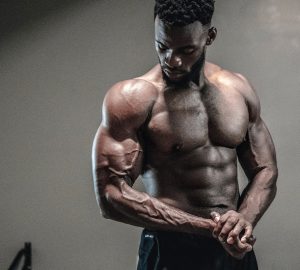If you’re running out of inspiration for your ab workouts and you have yet to find any real-world applications for the countless sets of crunches you’ve repped through in your life, maybe it’s time to give some more functional training exercises a try. Your core routine will be the better for it—and you might just build the six-pack you’ve been training for years to achieve.
Functional training refers to practices that are meant to help your real-world performance for sports, your job, or any other aspect of your life beyond just getting built and strong for their own sake. Marcus Filly, a former CrossFit Games competitor and coach, has taken those principles and added muscle-focused spin for a style of training that he calls Functional Bodybuilding. He’s aiming for looks and performance with his workouts—like these eight core exercises he recommends for you to add to your routine. “I’ll also show you how they’re going to give you better athletic performance and function in life, as well as bulletproof you against injury,” Filly says. “In Functional Bodybuilding, we’re always looking at ways to balance movement patterns and get you strong moving in all directions.”
8 Great Functional Bodybuilding Exercises for Your Core
Body Saw
You’ll need a set of rings or TRX bands hanging low to the ground for this move, which puts you in a plank-like position to start. As Filly notes, you can also prop up your feet on a physio ball, or use sliders or socks on a smooth surface.
“We need to keep your body straight,” he says. “The line from your shoulder to your heel should not bend.” That means to avoid piking up your butt as you move. If you struggle, Filly suggests going with one of the variations that keep your feet on the floor.
L-Hang
Filly loves hanging variations to train the core.
Before you jump to the L-hang, Filly recommends starting with a tuck hang for 30 seconds, then adding weight between your legs. No pullup bar? No problem. Use some parallettes instead.
Turkish Situp
“This move puts the regular situp to shame,” says Filly of this offshoot of the Turkish getup, which gives your core and your shoulder some work. Work your way up to using a weight.
“As you do this exercise, you need to be sure that you initiate from the floor by pressing up hard through the kettlebell and/or the dumbbell,” he says. “This is going to engage a muscle called the serratus anterior.”
Side Plank Variations and Hip Taps
“The muscles in our core that engage when we place lateral loads onto our core and midsection, they don’t get trained very well with other common sagittal plane [front-to-back movement] exercises,” Filly says. To build up that part of your core, flip onto your side for a plank.
Just make sure that your form is on point. Filly cautions against compensating by bending your hips and rolling your top shoulder forward. Again, a straight line is what you want. Really want to work? Tap your hip to the ground or add some weight.
Hollow Body Variations and Hold
Filly calls the hollow body position essential. “This is the exercise that might have the biggest carryover from core training to your overall strength training performance.”
Make sure to keep your low back “smashed to the floor,” as Filly says, throughout the entire work period.
Superman
Flip over and get connected with your inner superhero for this next move. “Here, you’re going to build a nice, aesthetic, tapered look to the back by hitting your lower traps, your spinal erectors, and the upper glutes,” Filly says. You’ll get a more tapered look by working these muscles, which will only make your frontside look better.
But there’s more than just looks here. “These are important support muscles for big and powerful weight training lifts like the deadlift, the overhead squat, and the press.”
Windmills
Here, we’re focused on the lower back and obliques. “When these areas are undertrained and weak, it’s going to leave you vulnerable to lower back tweaks,” Filly says. On that note, you should progress with weight cautiously.
Make sure to hinge at the hips, and rotate your upper body so that you can keep an eye on the weight in your hand.
Pallof Press and Press Outs
Here, we’re focused on anti-rotational strength. “Just remember when you’re performing these exercises to move slowly with control,” Filly advises. This helps you to keep your focus on the core.









